For a few days in early 2005, Southern California was underwater. The city of Ventura took almost 15 inches of rainfall between December 27 and January 10, just short of the local average for an entire year. Up the 101 Highway, in the coastal hamlet of La Conchita, a landslide buried 13 homes and killed 10 people.
For The New Yorker, T. C. Boyle described the disaster from the perspective of a driver: “Steel beams snapped like chicken bones, railroad ties went airborne. Up ahead of me, beyond [an] overturned U-Haul, a few cars had got through, but now a vanguard of boulders came sluicing across the freeway, followed by a soupy river of mud…. The mud spread out across the pavement, seething around the tires and underneath the car and beyond, and soon dark tongues of it had pushed across the southbound lanes, too.”
In the nearby town of Ojai, flooding from the same storms threatened the very existence of Soule Park Golf Course. A barranca runs through the center of the property, and normally it’s dry. In January 2005, it became a large, furious river.
Logan Hall had the last shift in the pro shop on the critical night. The clubhouse at Soule Park stood on a hill above the 1st and 10th holes. Between those holes was a pond, and a built-up dirt path served as a bulkhead between it and the rising river beyond. As Hall watched through the window, a section of the path crumbled. “It was like somebody taking a bite out of it,” he says. “There was just this chunk missing.”
The next morning, he returned to see what had become of the course. When he drove through the gate, he saw the general manager, his boss, coming toward him in a golf cart. “He looked white as a ghost,” Hall says. “And he just said, ‘We have nothing left. The golf course is gone.’ I don’t remember if those were his exact words, but it was something to that effect. It was like, ‘We’re done.’”
Overnight, the walls of the barranca had caved in. The pond had drained into the river. Sections of several holes had been erased, and irrigation pipes were sticking out of the ground. The ends of the bridges hung in mid-air. “The water had undermined certain greens to the extent that pieces were falling off,” Hall remembers. “There were pieces of the greens just kind of hanging over the edge. If you stood there watching them long enough, they’d start to fall in the water.
“It was a hell of a scene. It was apocalyptic. For you and your world there, where Soule Park is your world and your life, it was like the apocalypse. I don’t remember one person that was like, ‘Oh yeah, we’ll be okay.’ Pretty much everybody was like, ‘How’s your résumé looking these days?’”
Ventura County owns Soule Park but leases it to private operators. After the flood, the leaseholder walked away. For several months, as the county focused its efforts on La Conchita, the golf course hung, like the bridges, in mid-air. The staff opened a few makeshift holes, but the property deteriorated. The underground infrastructure had been wrecked, and weeds had begun to take over.
That was 14 years ago. Today, Soule Park Golf Course is thriving. It has energetic management, good turf conditions, and 18 holes renovated by Gil Hanse and Jim Wagner. Among courses in California with a peak walking rate under $50, Soule Park is in a class of its own. Indeed, only a handful of municipal facilities in the entire country can match its combination of affordability and superb architecture.
So Soule Park survived. But it wasn’t easy.

The cross bunker on the 9th hole at Soule Park. Photo credit: Cameron Hurdus @cameronhurdus
The Soule property
The town of Ojai is a natural hideaway. Fifteen miles inland from the coast, it sits in a peaceful pocket of the Coastal Range. The weather is dry and hot for most of the year, but groves of oaks and sycamores provide shade. On some evenings, the setting sun lights up the Topa Topa Mountains to the north in outrageous hues of fuchsia and tangerine.
It was in this setting that George Thomas and Billy Bell built Ojai Country Club in 1923. After World War II, the course was reinvented as the Ojai Valley Inn, a resort that catered to Southern California’s upper crust.
In the 1950s, with the population of Ventura County booming, officials saw a need for more affordable public recreation. They zeroed in on a tract of land just off the main road in Ojai, less than a mile east of Thomas and Bell’s course. “The Soule property is well suited for the development of a golf course,” read the report of the Ventura County Sports Advisory Committee. “The natural terrain, with its plains, knolls, river, and wooded areas, blend to provide ideal sections for golf, picnics, and games.”
Written in 1959, the report vibrates with a belief in the civic potential of golf—a belief that many of us today would consider quaint. “The best means of combating juvenile delinquency is to provide a well-rounded program of constructive physical activities for young people,” it asserts. “Golf provides a most wholesome type of clean outdoor sport and exercise for the individual. Young or old, man, woman or child; all can find good, clean, healthful enjoyment and recreation on a golf course.”
Billy Bell’s son, William F. Bell, completed Soule Park Golf Course in 1962. In the ensuing decades, the course faded. Greens and bunkers regressed to ovals, and playing corridors became crowded with trees.
Still, when I first saw Soule Park in the 1990s, I was struck by the scale of the land, the pulse-quickening drop from the 1st tee to the fairway, and the wide, dry ravine cutting through it all. The course wasn’t exceptional, but the place was.
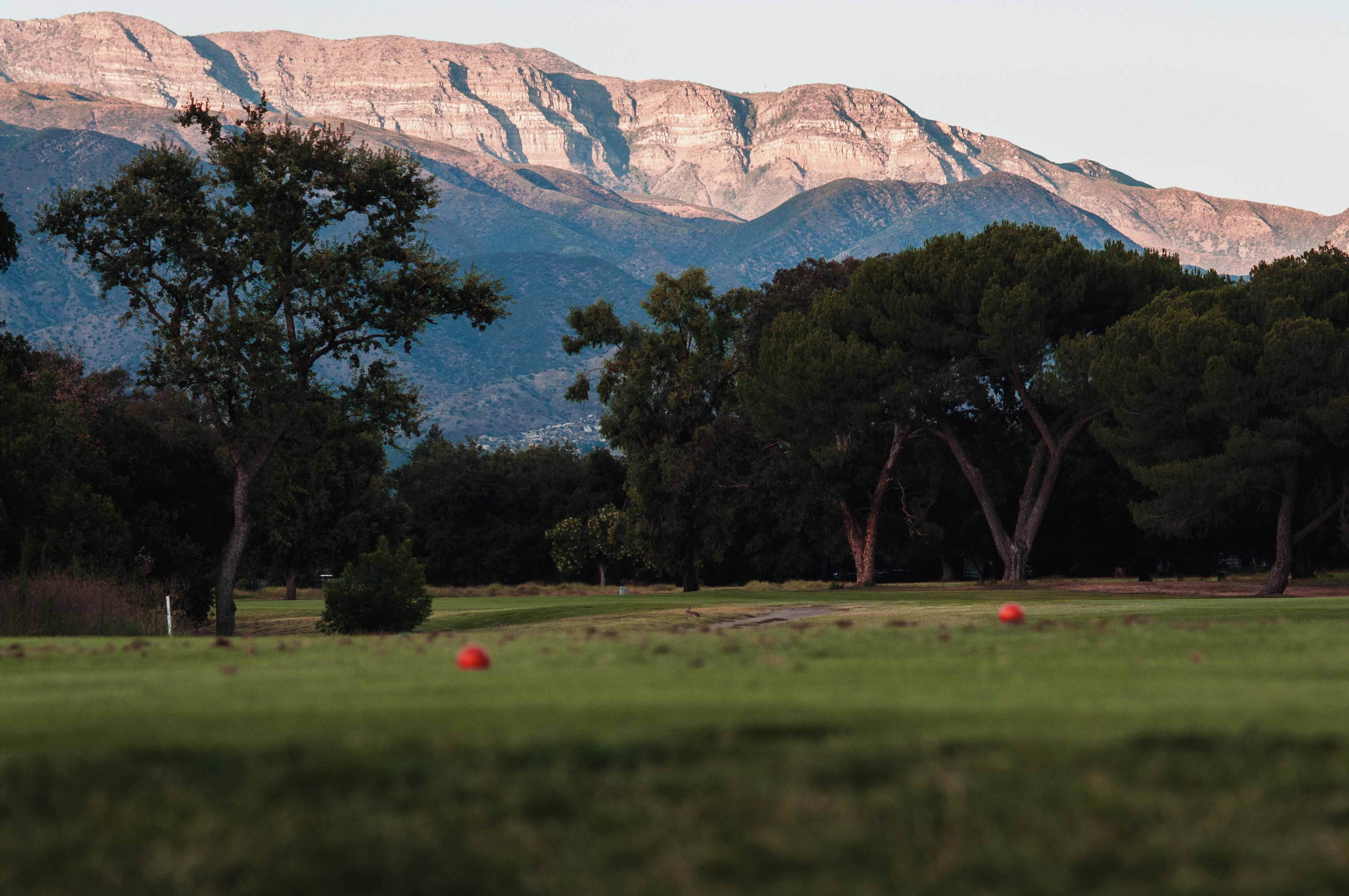
The Topa Topa Mountains, seen from Soule Park on a relatively muted night. Photo credit: Cameron Hurdus @cameronhurdus
Somebody with vision
After the storms of 2005, no one knew whether Soule Park could continue to be a golf course. “A jigsaw puzzle just got smacked by an angry two year-old,” Logan Hall recalls, “and the pieces are all over. How are we ever going to put this back together again? We all knew it would take somebody with vision.”
Summer came, and the course still languished. Finally, Ventura County officials called Craig Price, whose company Highlands Golf manages Rustic Canyon Golf Course in Moorpark. Rustic, too, had taken a hit from the storms, but Price had already brought in the original architects, Gil Hanse and Jim Wagner, to rebuild the damaged holes.
Price was puzzled that the county hadn’t acted as quickly on Soule Park. “I was like, ‘How’s your repairs going there?’ They said, ‘Well, we haven’t actually done anything yet.’ And I said, ‘Really?’”
After sketching out a budget, Price called Ventura County back. He said he could rebuild the course for $3.2 million, a number that pleasantly surprised county officials. It was a deal.
Logan Hall remembers that the new boss cut a dashing figure. “He showed up in his Porsche or something like that, in his jeans and nice shirt—you know, the clichéd new, fun millionaire kind of guy. But he seemed to know his stuff, and he had that attitude of like, ‘Yeah, we’re gonna rock and roll here.’” It soon became clear to the staff at Soule Park that Price had a lot of connections in the golf industry. Everyone’s jobs seemed to get easier.
Perhaps Price’s most important connection was with Hanse Golf Course Design. It was his secret to keeping costs down. Minimalist by philosophy, Gil Hanse and Jim Wagner wanted to do things cheaply—to move as little dirt as possible, to shape the greens and bunkers themselves. And they were hungry. “Back then,” Price explains, “Gil was just an unknown guy. He was just looking for work between gigs.”
The first task at Soule Park was to make the golf course functional again. They had to replace the irrigation system, repair (and in one case, wholly rebuild) the bridges across San Antonio Creek, and recover the lost tees and greens. But since Price trusted Hanse and Wagner, he allowed them to pursue a more ambitious scheme. “Jim and I went around and looked at what we could do,” Hanse says, “what we could tweak, what we could push, where we could put bunkers that were more meaningful, change them stylistically, and build what we hoped would be a better set of greens.”
According to Wagner, the nearby Ojai Valley Inn provided inspiration. “We looked at a Thomas and Bell concept behind the philosophy of our design,” he says. “The bunkering and the green complexes is really where we drove toward that look and feel.”
Although Hanse and Wagner kept most of William F. Bell’s routing, their renovation of Soule Park was transformative. With a modest amount of tree removal, they opened up new angles on several holes. Their jagged-edged, Bell Sr.-style bunkers introduced risk-reward questions from the tee, and their subtly contoured greens added variety to approach and short-game shots. Their work brought Soule Park’s true character into relief: with its barrancas, oaks, sloping terrain, and strategic design, it was a vintage California golf course in the Thomas and Bell tradition.
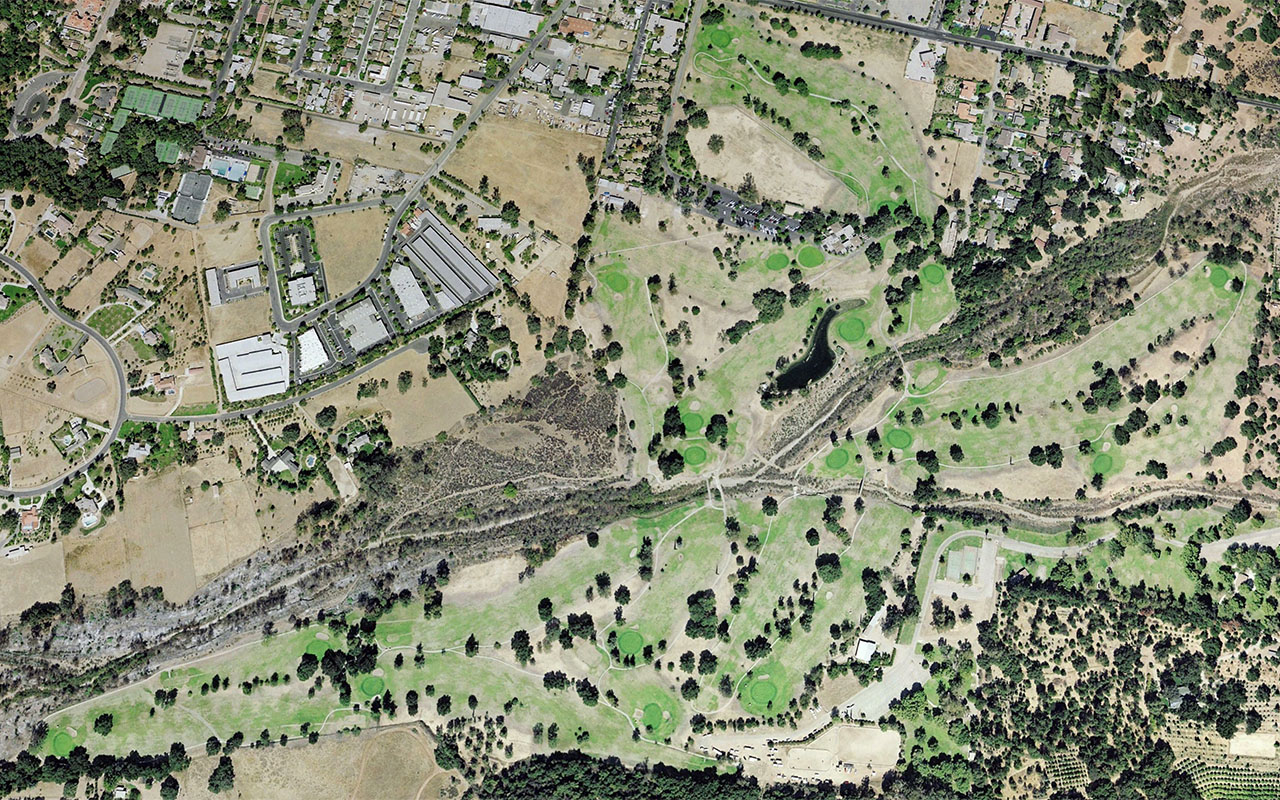
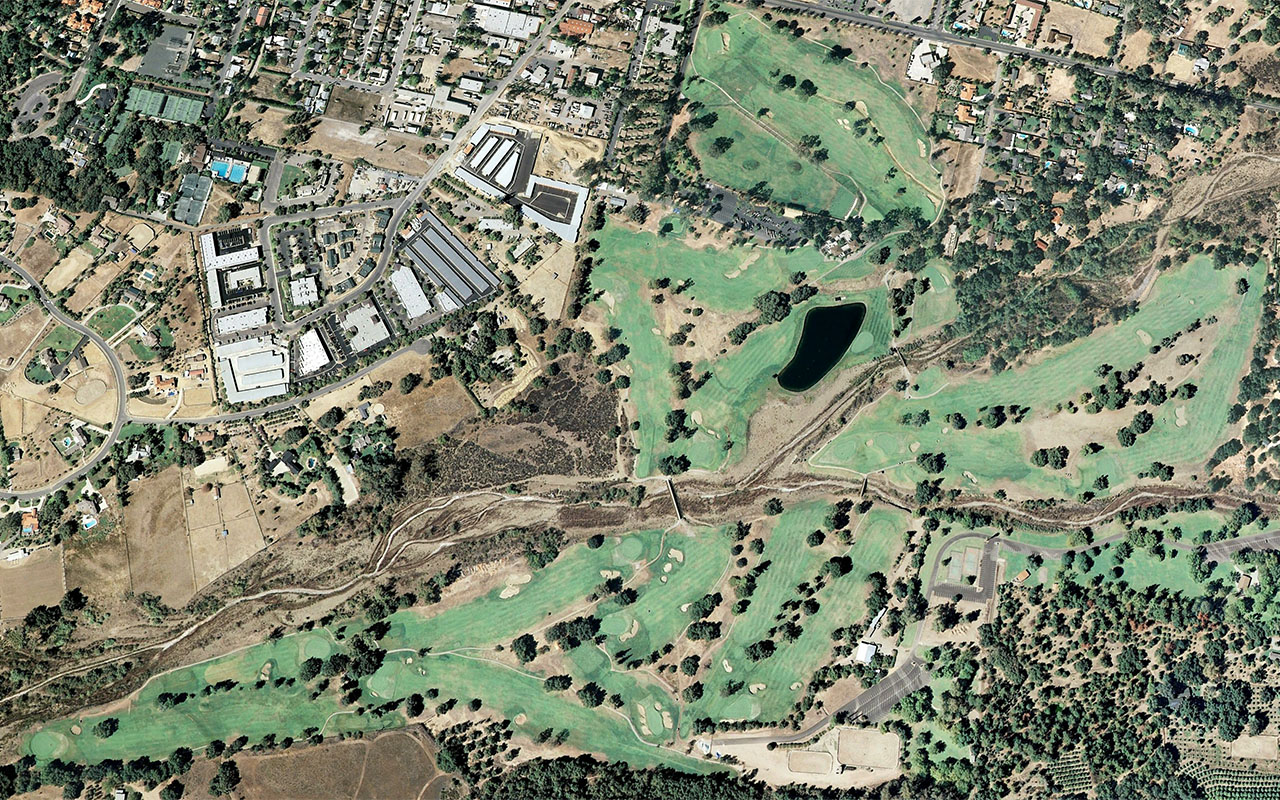
-

The 1st fairway at Soule Park. Photo credit: Cameron Hurdus @cameronhurdus
-
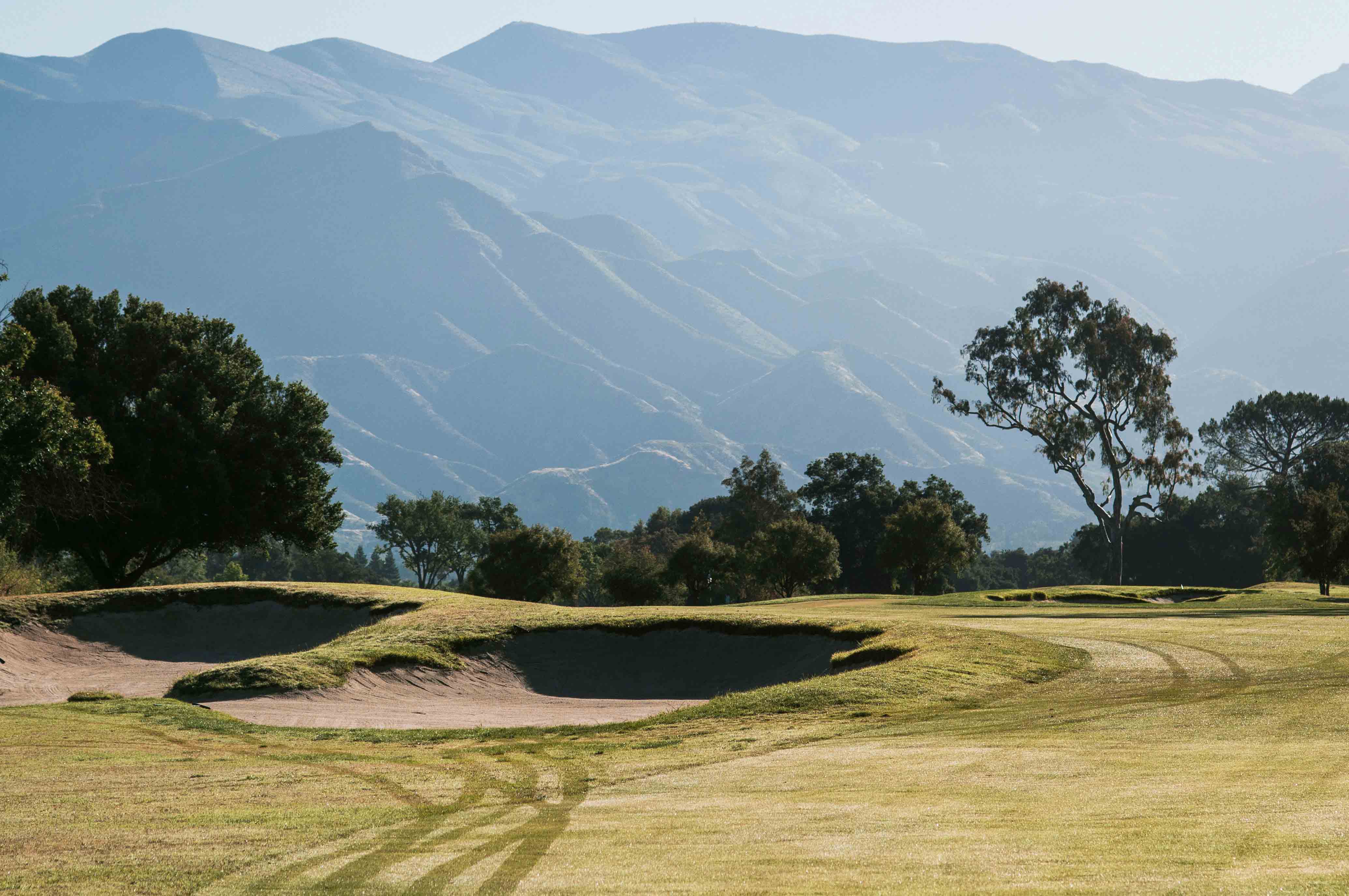
The 7th hole at Soule Park. Photo credit: Cameron Hurdus @cameronhurdus
-

The approach to the 11th green at Soule Park. Photo credit: Cameron Hurdus @cameronhurdus
Last year, I visited Soule Park for the first time since the renovation. The changes to the 4th and 5th holes jumped out at me right away. Before 2005, No. 4 was a par 5 and No. 5 was a par 4. Both were straightforward, with circular greens. Today, they are a pair of short par 5s with brash, memorable green complexes.
For No. 4, Hanse and Wagner sculpted a semi-boomerang green that alludes to the 1st at Riviera and the 6th at Crystal Downs. Where Thomas and MacKenzie would have placed a bunker in the crook of the boomerang, however, Hanse and Wagner built a closely mown hummock through the middle, from front to back. The result is a green unlike any I’ve seen. If you end up on the wrong side of the spine, good luck getting down in two.
So after a strong drive on No. 4, you have a choice: go for the green and risk leaving a ticklish chip or putt over the ridge, or lay back to a spot where you can use the contours to feed the ball toward the pin. Bedeviling the conservative play, however, is a trio of bunkers short right.
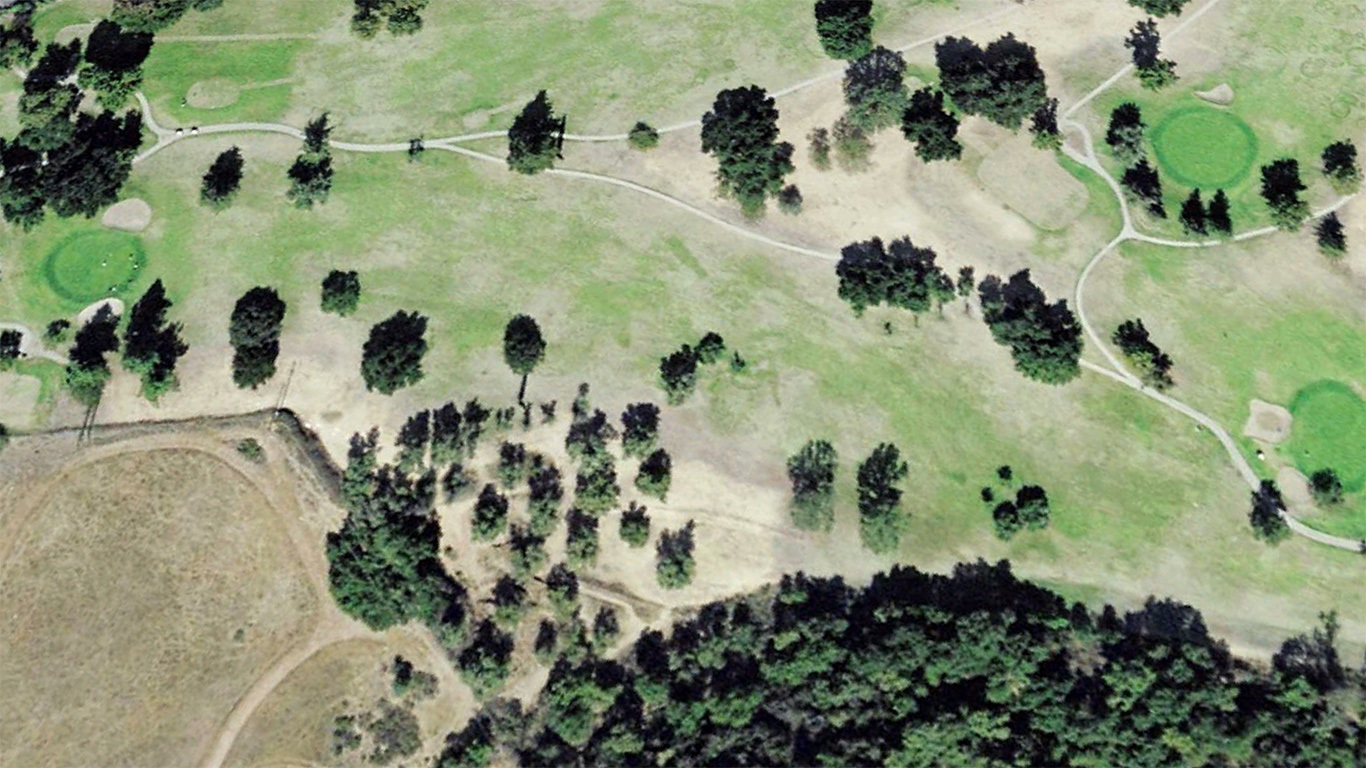
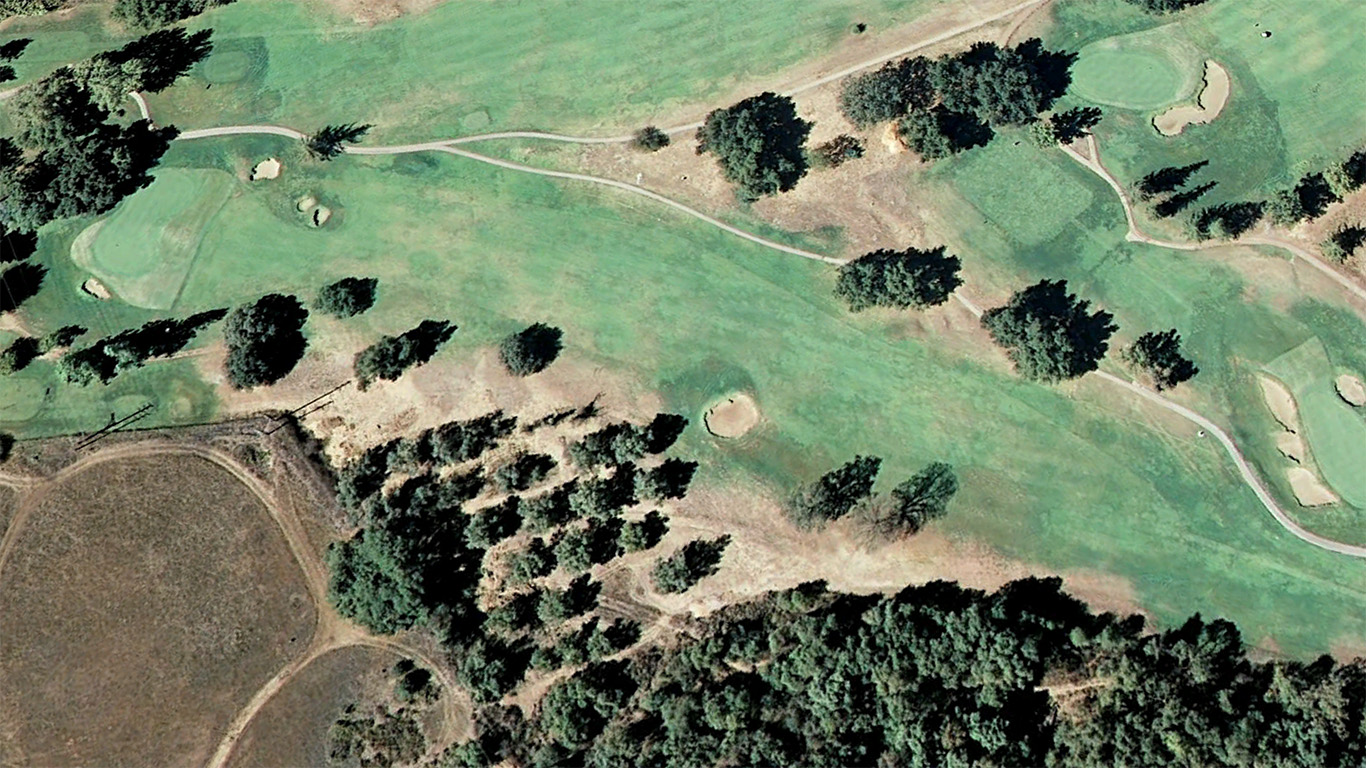
-
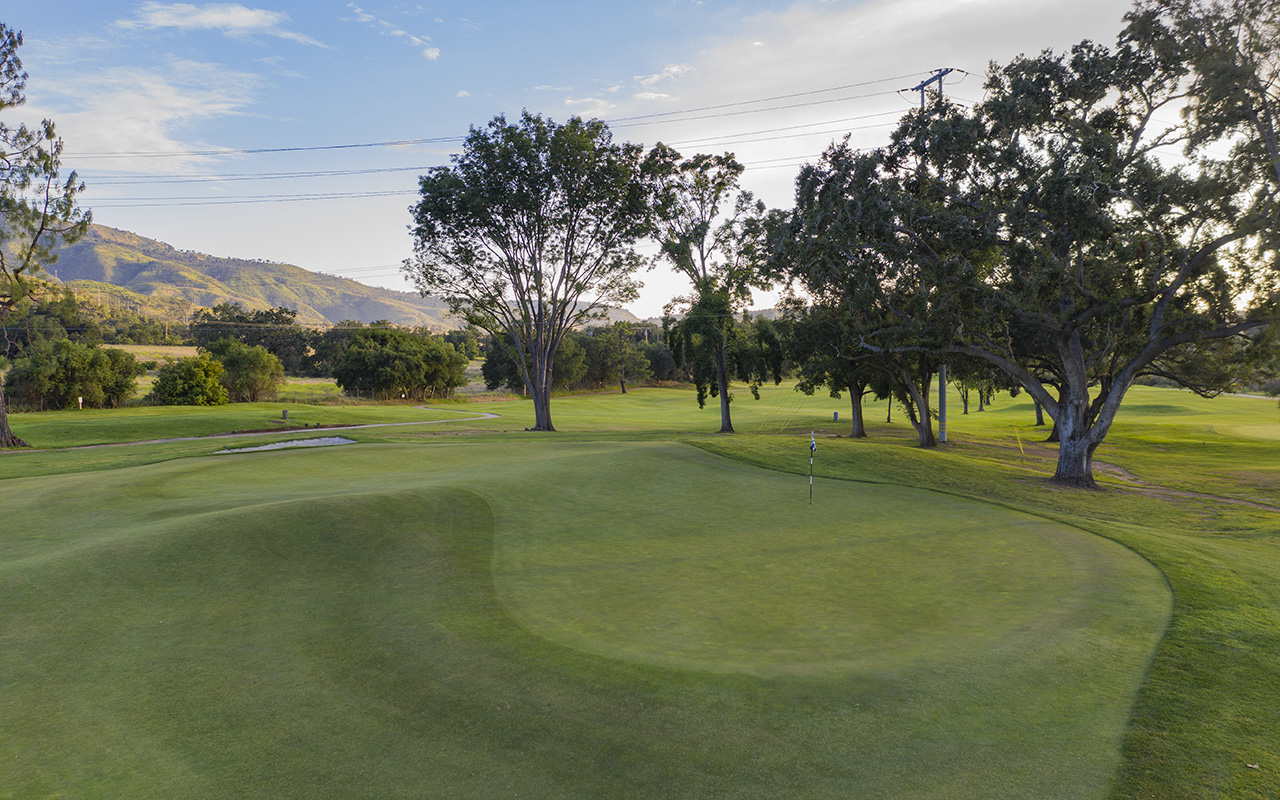
The 4th green at Soule Park
-
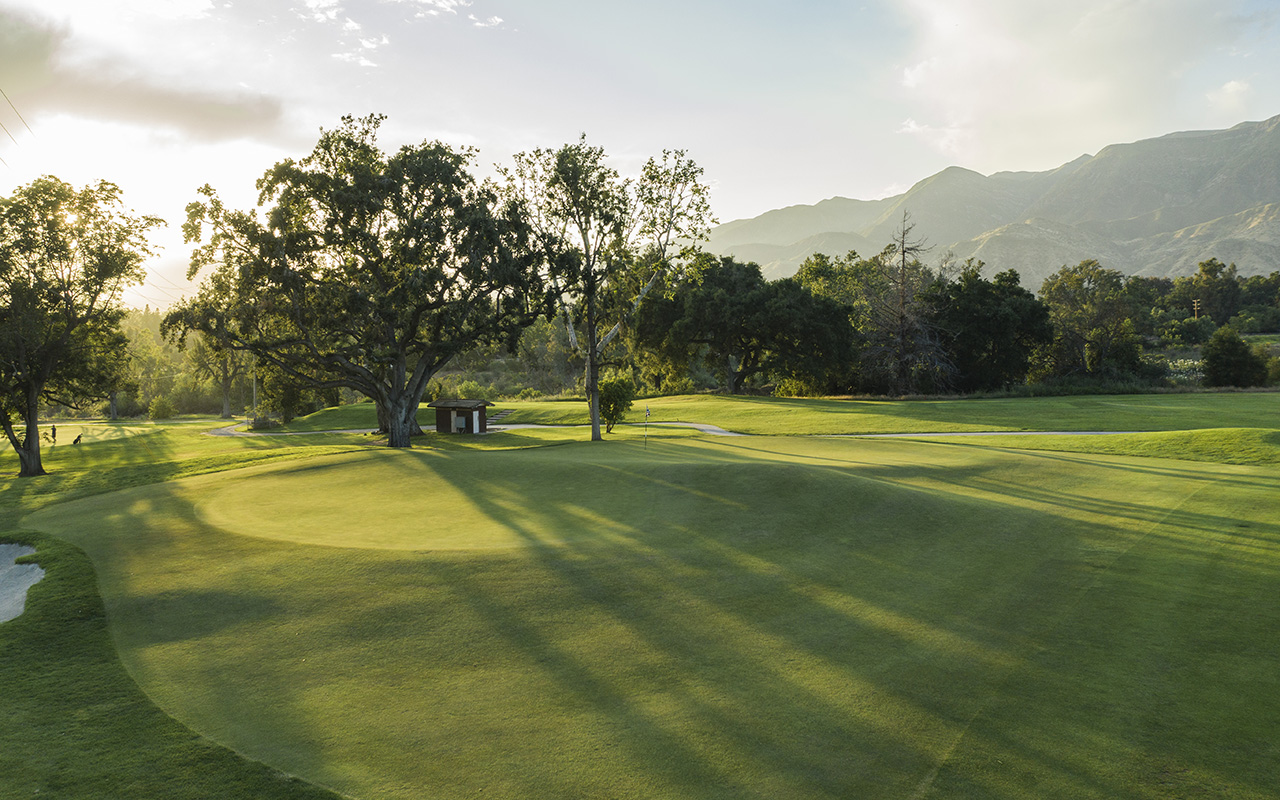
The 4th green at Soule Park
-

The 4th green at Soule Park
The punchbowl 5th green is the inverse of the 4th—convex instead of concave. Until you reach the top of the ridge 20 yards out, you can’t see the green at all. So going for it in two is a nervy proposition: a long iron or a wood to a blind target surrounded by dense foliage. Settling for a 75-yard wedge on your third shot is a safer bet, but the hole is short enough—under 500 yards from the tips—to encourage aggressive play.
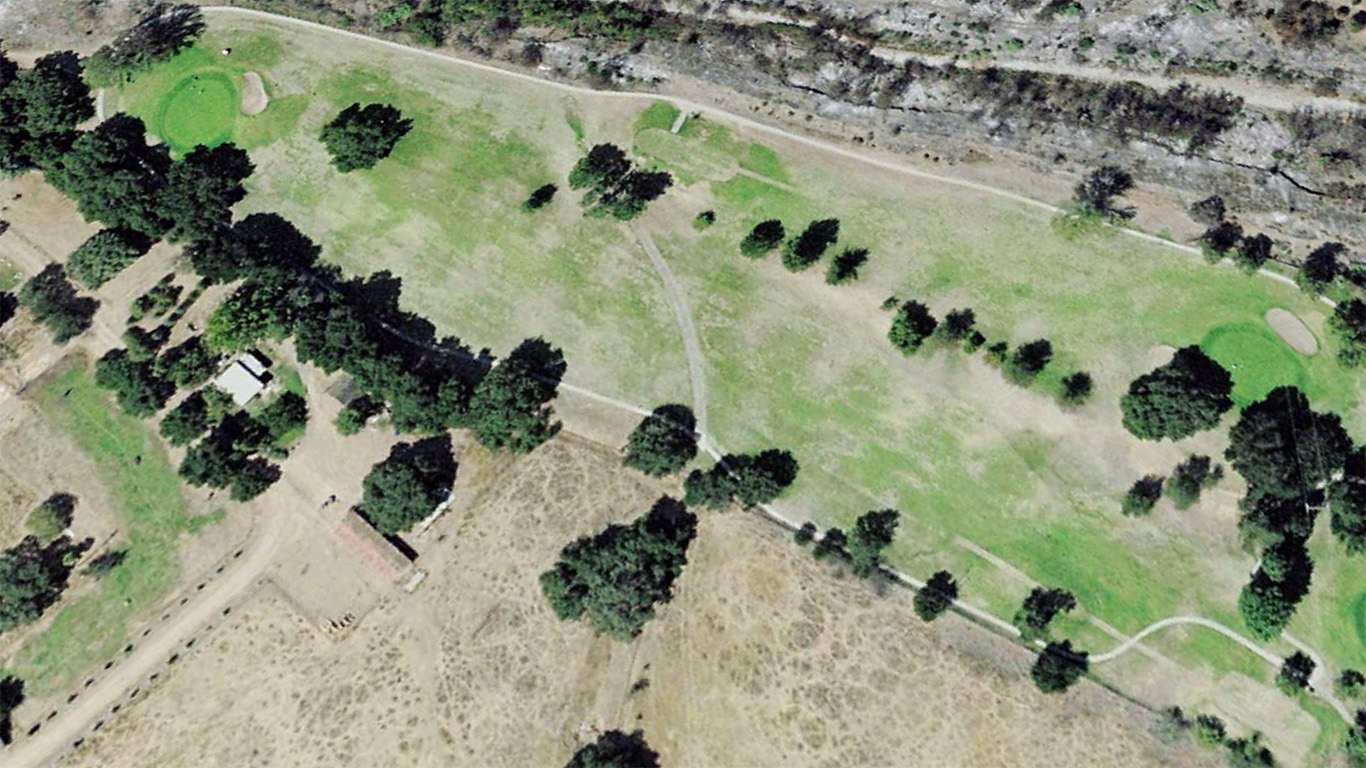
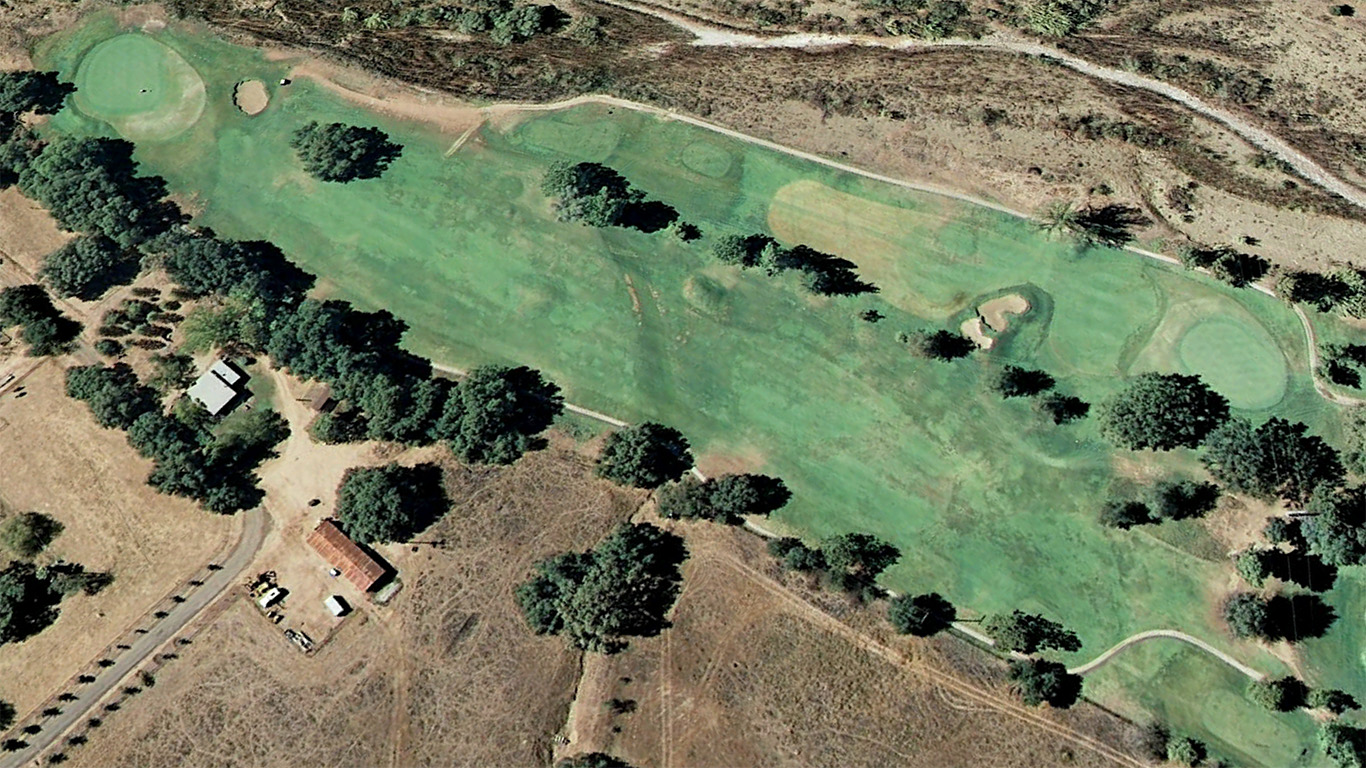
-
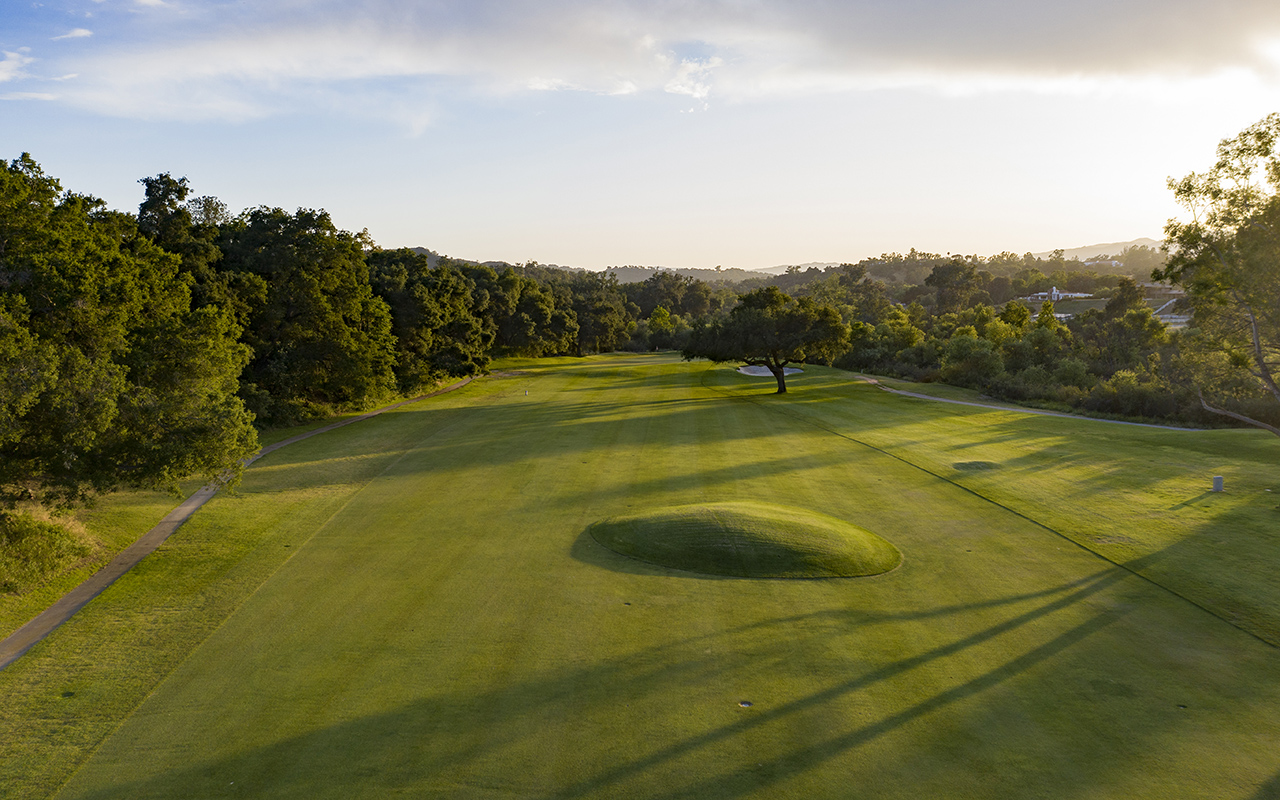
The 5th hole at Soule Park
-

The 5th hole at Soule Park
-
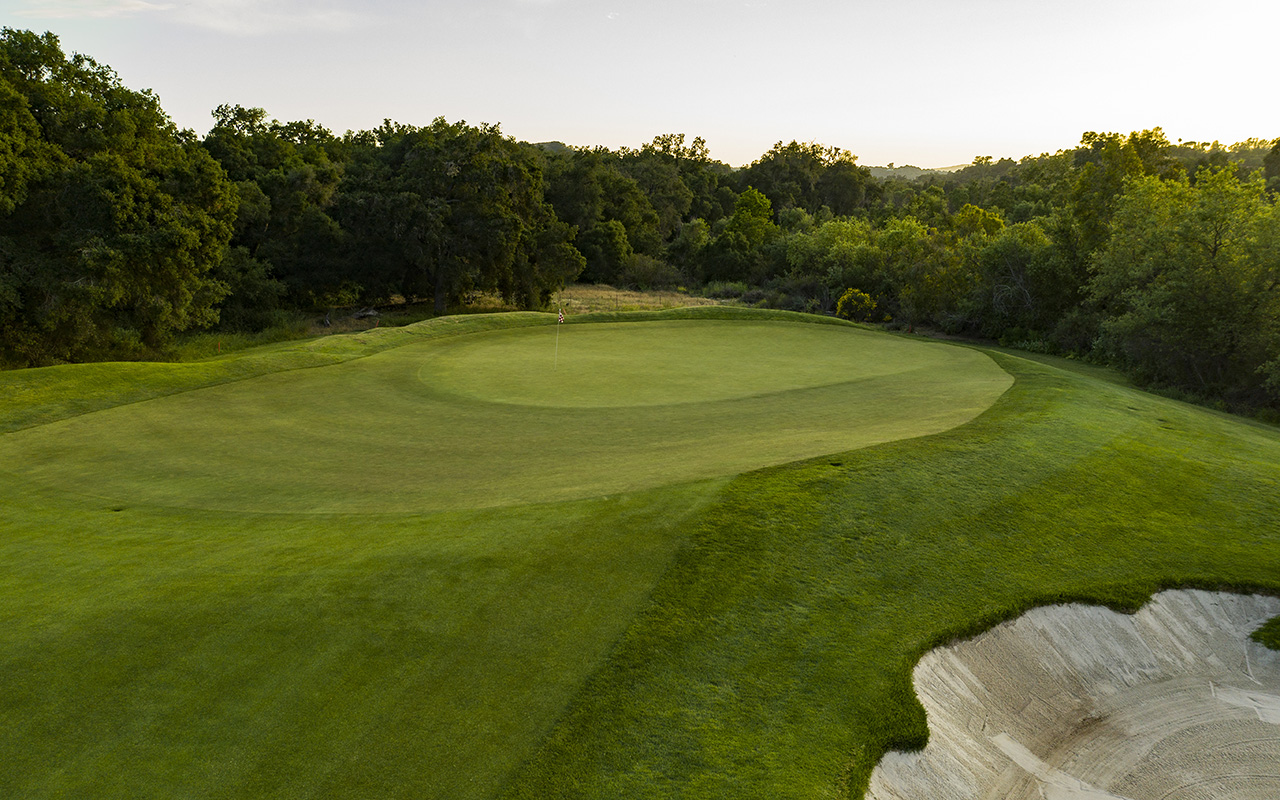
The 5th green at Soule Park
In overhauling Nos. 4 and 5, Hanse and Wagner had one main objective: fun. And to them, throwback concepts like boomerangs and punchbowls were just that. “It’s just trying to be as creative as you can without being stupid,” Hanse says.
As they soon found out, however, the regulars at Soule Park had their own notions of “fun” and “stupid.”
The Bunker Revolution
Bringing a golf course back from the brink is one thing. It’s not easy, but at least it’s exciting. Managing a golf course is something else entirely.
In 2007, with the renovation complete, Craig Price signed a 10-year agreement with Ventura County to manage Soule Park. The problem was, he lived in Pacific Palisades, a neighborhood in southwest Los Angeles. His 40-mile commute to Rustic Canyon was difficult enough. But the 70-mile, traffic-fraught drive to Ojai? It wasn’t practical, and Price was rarely able to manage Soule Park in person.
As it turned out, there was a lot to manage. Some of the regulars were unhappy with Hanse and Wagner’s work. Specifically at issue were new bunkers in the line of play, including a cross bunker on the par-5 11th and a center-line pot on the short par-4 13th. Several members of the senior men’s club claimed that these hazards were too severe and had made the course overly difficult. Since seniors accounted for about 40% of Soule Park’s client base, Price felt cornered. He set up peace talks with the disgruntled players. “We had the Bunker Revolution there,” Price quips.
Meanwhile, Hanse Golf Course Design was on the rise. Their 2005 design at Boston Golf Club had earned positive notices, and they had begun high-profile restoration and renovation work at Los Angeles CC, Sleepy Hollow CC, and TPC Boston. At Soule Park, the debate raged on largely without their involvement. “It depresses us,” Wagner says, “because people don’t ask our opinion.”
The architects’ opinion was that the controversial bunkers made the holes more interesting. The cross bunker on No. 11 created options on the second shot: should you try to carry it, thread the needle to the left, or lay up short? As for the center-line pot on No. 13, it presented a strategic dilemma as old as Old Tom Morris: it was exactly where you’d want your drive to end up to gain a decent view of the green. The more you risked going in it, the better off you would be.
-
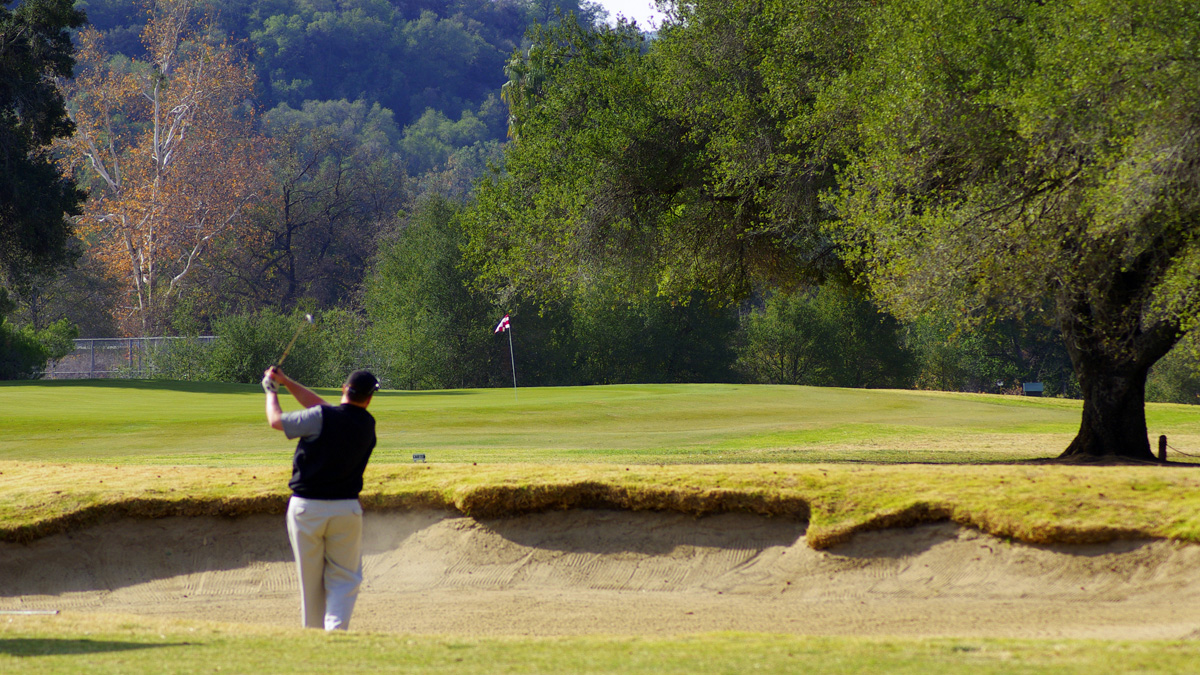
The old cross bunker on No. 11 at Soule Park. Photo credit: Tommy Naccarato
-
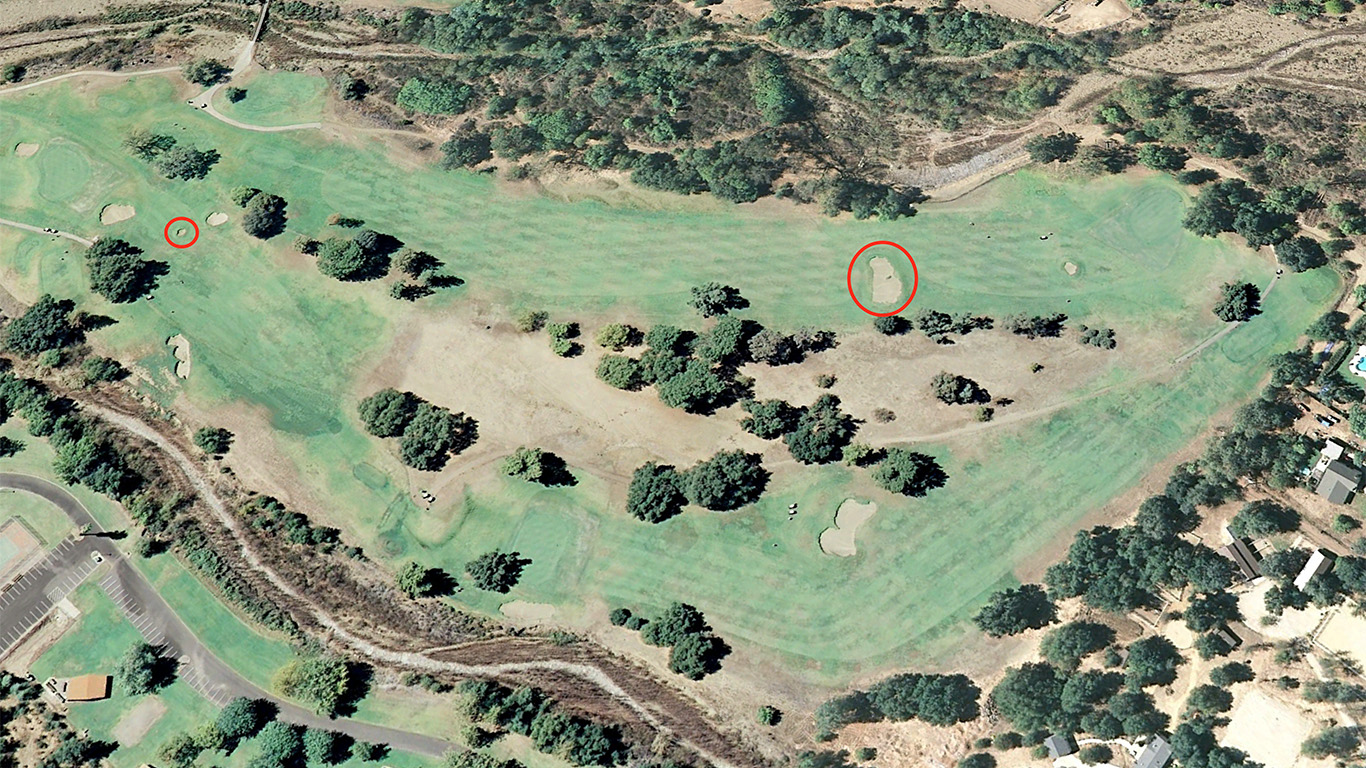
Clockwise from top left: Nos. 11-13 at Soule Park in 2007, with two of the disputed bunkers circled
Hanse and Wagner also suspected that many of the seniors were playing from the wrong tees. There were five sets of tees with gender-neutral, California-flavored names: Oak, Orange, Avocado, Lime, and Lemon. Many of the senior men played from Avocado (6,154 yards) when they probably should have moved up to Lime (5,462) or Lemon (5,048). But these were still thought of as the “ladies’ tees”—a bias implicitly endorsed by the scorecard, which listed the Lemon yardages at the bottom, next to the ladies’ handicap information.
The brouhaha grew loud enough to reach the ears of the Wall Street Journal’s John Paul Newport, who reported that the senior men’s club at Soule Park had lost 45 of its 175 regular members.
As his hours on the highway piled up, Craig Price found himself sympathizing with the seniors’ perspective. In the fall of 2007, he ordered center-line bunkers on Nos. 1 and 13 to be turfed over, and sections of bunkers on Nos. 3, 11, and 16 to be filled in.
“I did get a call from Jim Wagner, who wasn’t very happy with my work on his work,” Price says, laughing a little at the memory. “He’s like, ‘What are you doing, Craig? You think you’re an architect now?’”
Since then, Soule Park has seen other, more minor revisions. A few trees have been planted, apparently for safety reasons. The Bell-style edges of the bunkers have been softened slightly. The sequence of the holes, which Hanse and Wagner altered, has gone back to what it was before. But the essentials of the 2005 renovation—including, thankfully, the greens—remain.
-
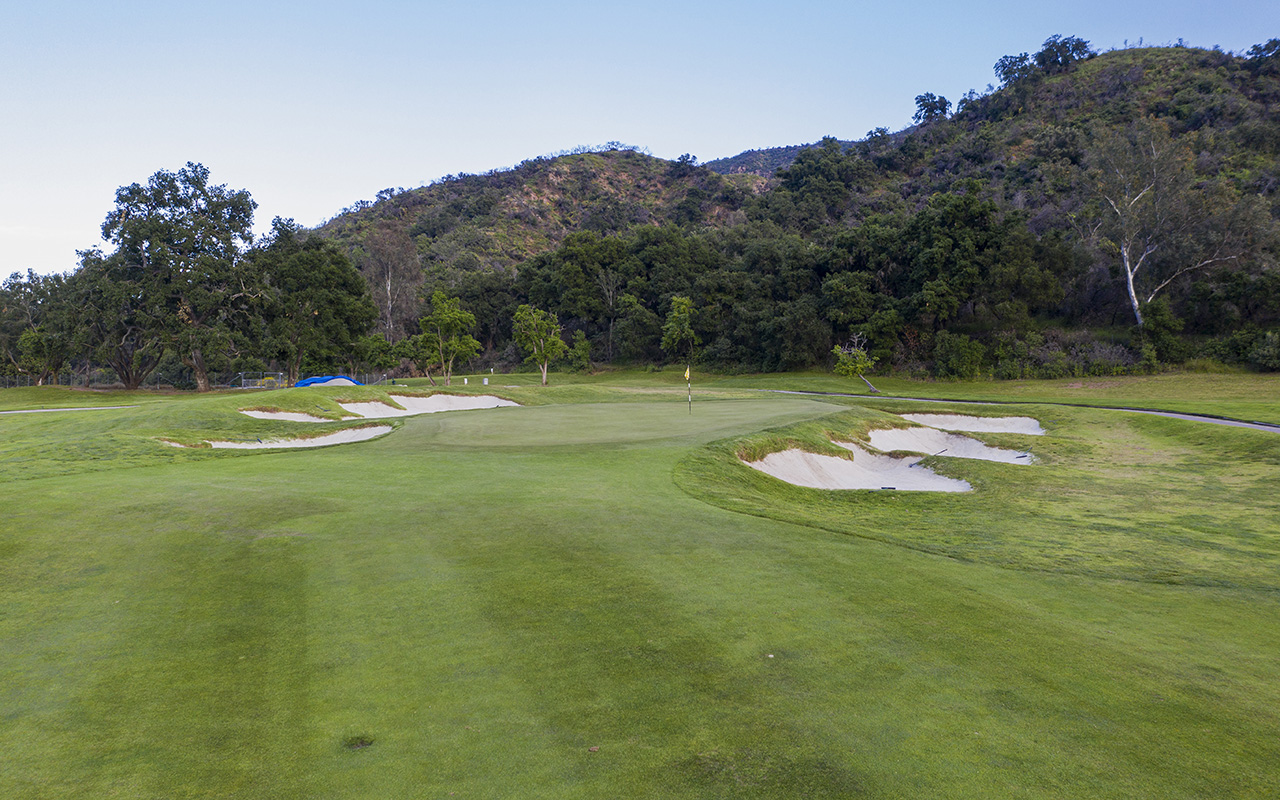
The 3rd green at Soule Park today
-
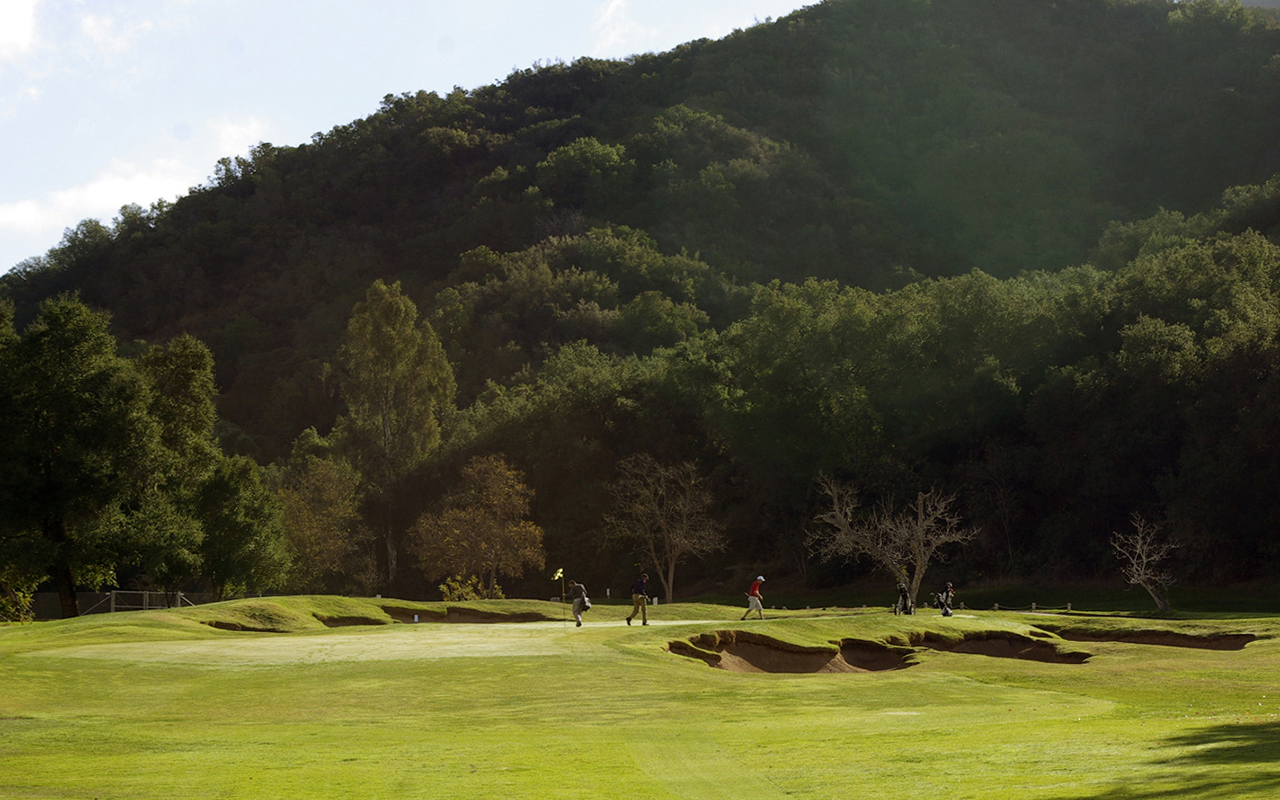
The 3rd green at Soule Park just after the renovation—note the more intricate bunker edges. Photo credit: Tommy Naccarato
Today, Hanse and Wagner look back on the Bunker Revolution with a mixture of frustration and philosophical acceptance. “I think it was just so different,” Hanse says, “and people have a hard time embracing change, especially if they have a comfort level with something. It’s hard to get some people to accept that it could be better.”
“Unfortunately, in some cases,” Wagner says, “it’s the mentality of the American golfer, or a lot of golfers in general, that they don’t want any unpredictability. They want to shoot the same score. They want to understand what the lie’s going to be in the bunker. They want to hit the ball in the same spots; they want the same reaction. And in our mind, it’s the complete opposite. We want that thought process. We think that’s what makes the difference for all types and levels of players. You may not be the best player in the world, but if you can use your mind, you can get around and score well.”
Yet Wagner accepts that the regulars at Soule Park—not all of them, certainly, but enough of them—didn’t see things the same way. “And that’s fine,” he says. “You can say that in any aspect of life. People have a different appreciation for different things. There’s a lot of foodies out there that love to eat good food and try interesting, new, fun stuff. And there’s other people that are like, ‘I don’t want to eat that fish that’s got mango salsa on it! Just fry it!’
“You just really wish that when it’s your product, they don’t go ahead and discard it. As a chef, you don’t want that guy just to say, ‘That tastes like shit,’ and send it back to the kitchen.”
A new Soule
Six years into his 10-year agreement, Craig Price finally had enough. He says that the Affordable Care Act, with its new requirements for employee healthcare, was the last straw. In 2013, Ventura County approved the transfer of the management contract to Tom and Debbie York, whose son Tyson was a Soule Park teaching pro.
Early the following year, the Ventura County Star ran a story about the new managers. In retrospect, it reads like a harbinger of hard times. It reveals that neither of the Yorks had any experience in the golf industry and that they planned to rely on the knowledge of their employees. They were enthusiastic about boosting the restaurant and banquet facility but seemed to begrudge the difficulty of maintaining the golf course.
The next few years were tough ones for Soule Park. The condition of the course and the rest of the property declined. In late 2016, as the end of the Yorks’ lease approached, the county put out a new request for proposals.
Keith Brown was in the midst of his own transition at the time. For two decades, he had worked for the American Golf Corporation. He had risen from manager-in-training at a Los Angeles club to Chief Operating Officer, reporting directly to Craig Price’s father, CEO David Price. During the golf construction boom of the 1990s, American Golf grew quickly. But around the turn of the millennium, the company went into a long period of retrenchment. A series of ownership changes led to Brown’s departure in 2014.
When the Soule Park RFP came out, he was searching anxiously for his next opportunity. “I was looking at everything at that point,” he says. “I really was looking at everything.”
But Keith Brown wasn’t just a C-suite executive out of a job. He had grown up playing the municipal courses of Los Angeles, most of all Rancho Park. He appreciated how the sturdy Billy Bell course was both an affordable urban muni and one of the host venues for the Los Angeles Open, a prestigious event for the world’s best golfers.
Crucially, Brown also knew municipal golf from the business side. He had overseen the operations of government-owned facilities in New York, Atlanta, Detroit, and Los Angeles County. In experience and know-how, he was the opposite of the Yorks. “Keith is a smart, smart guy,” says Craig Price. “And he’s a good guy.”
With Price’s support, Brown negotiated a 20-year lease with Ventura County. The lease comes with two five-year extensions and states that he is responsible for capital improvements.
From his first visit to Soule Park, Brown was worried about the shape the property was in. “I’ve seen a lot of interesting situations, having been involved in these municipal environments in so many cities across the country. Soule Park was uniquely distressed physically. It really was amazing that they let it go that far.”
In his first two years, Brown’s staff repaired the balky irrigation system, renovated the bunkers, grew turf in areas that had turned to dirt, removed dead trees, and sharpened the distinctions between roughs, fairways, surrounds, and greens. Gradually, Hanse and Wagner’s craftsmanship came back into relief. “I underestimated on the front end how good the golf course was because I just couldn’t see it,” Brown admits. “But then I started to stand on tee boxes or look back from green complexes and see these real golf holes.”
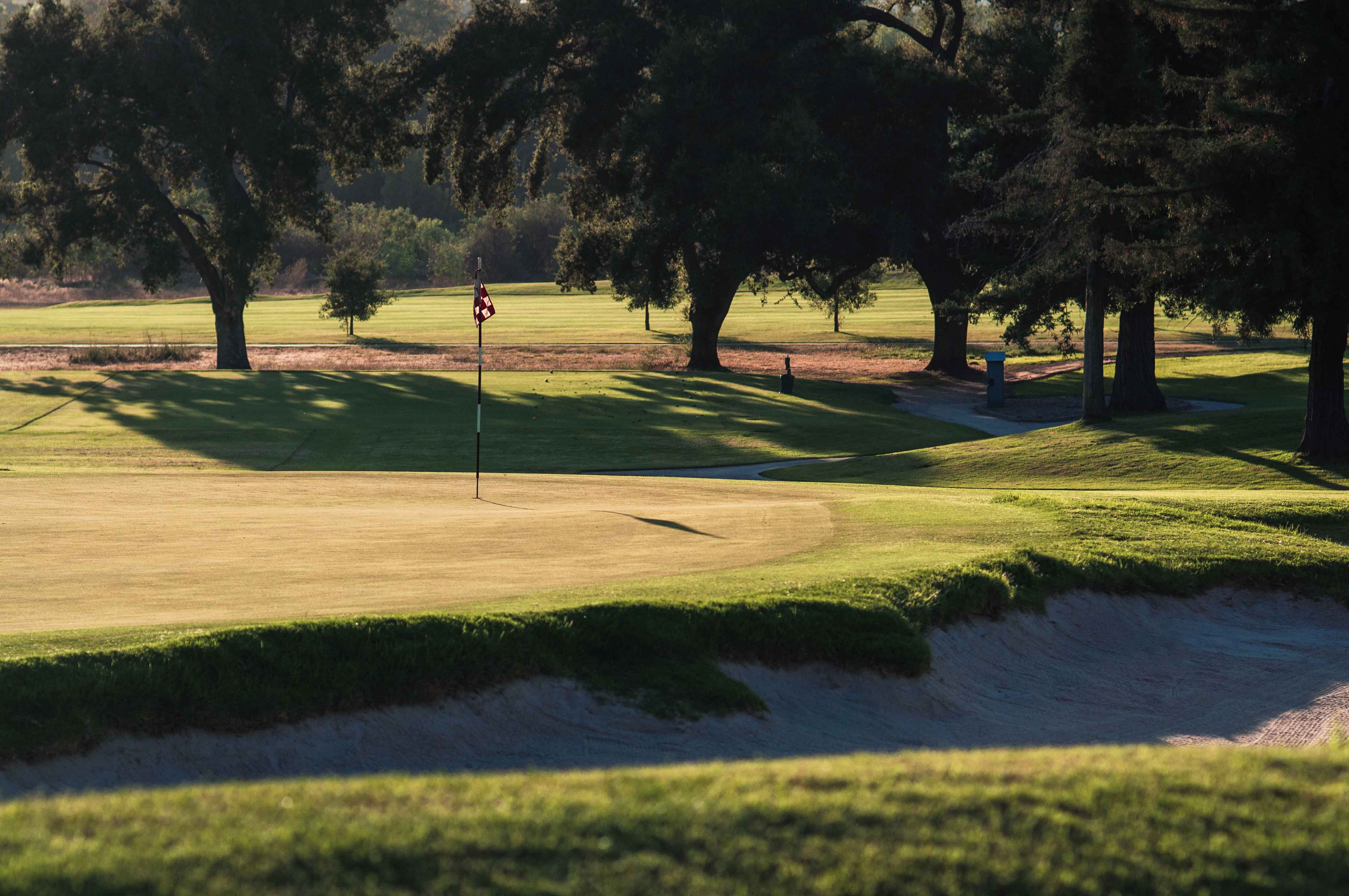
Behind the 3rd green at Soule Park. Photo credit: Cameron Hurdus @cameronhurdus
According to Brown, business at Soule Park is ahead of his projections for the year. It’s also back on the regional tournament circuit, hosting qualifiers for the 2018 U.S. Mid-Amateur and the 2019 U.S. Senior Open.
But refurbishing the facility was just one key project. Remaking its culture was another. When he arrived, Brown says, the environment felt negative. “I wish I had taken a photo of all the signs I took down from the property that said, ‘No, you can’t do this, that, or the other.’ It was unbelievable. Even [the outgoing message on] the answering machine, before it said anything to you, told you that proper golf attire was required. You walked into the pro shop, it reminded you that proper golf attire was required. When you stepped onto the golf course, you would see a sign that told you what you shouldn’t be doing. You looked at the driving range, the same thing. We took everything down.”
For Brown, the signs were not just unnecessary; they set the wrong tone. “We just made it a lot easier to enjoy your time at Soule Park. Look, if you want to play in a t-shirt, you can play in a t-shirt. If you want to play in flip-flops, you can play in flip-flops. If you want to have an amazing round at a destination golf course with a foursome that’s also staying at the Ojai Valley Inn, you get to have it. You can feel comfortable at all levels. There’s very, very few occasions when one level truly offends another.”
With his initial changes to the culture and maintenance of the Soule property taking hold, Brown is now looking to the future. He would like to host more sectional qualifiers and high-school matches. He is also hoping to renovate the restaurant and bar. “Not to make it the Taj Mahal,” he says, “but to put it in its right place, to have it match with everything that’s Soule Park: a friendly, local environment.”
Above all, Brown wants to keep pushing the golf course forward, though now with an eye to the past. He admires the work of Hanse Golf Course Design, and he’s open to reversing some of the effects of the Bunker Revolution.
In the 14 years since they reimagined Soule Park on a budget of $3.2 million, Gil Hanse and Jim Wagner have become famous. They are now creating grand arenas for major championships and restoring the designs of Golden Age architects at famous clubs. But they still claim Soule Park—$32 on weekdays, $42 on the weekend—as one of their own. “Good design doesn’t belong in a certain class,” Hanse said on The Fried Egg podcast last year. “It’s not only for wealthy, private clubs. It’s for everybody.”
Keith Brown has the same belief, and in running Soule Park he has found daily confirmation of it. “I love the fact that we’re one of the rare breed of courses at the municipal golf level, at the affordable level, that has the DNA of such great designers,” he says. “I don’t know what that means, but I love it, and I want to honor it and respect it.
“I hope we’ll be an example of where a high caliber of design met affordable public golf, and it worked. Maybe people can look at us and believe it can happen in other places as well.”

The approach to the 17th hole at Soule Park. Photo credit: Cameron Hurdus @cameronhurdus
All can find…
The last time I visited Soule Park, I spent the evening at the restaurant, taking in views of the golf holes and the mountains to the south. There was no sign that this landscape had once been consumed by floods.
The course wasn’t crowded, but there were several groups making the most of the fading daylight. One of them appeared over the rise in the 9th fairway. They walked toward the green, which sits by the restaurant patio. It was a man and his four children. The little ones skittered about with kids’ clubs, smacking wiffle balls.
On the table in front of me was the 1959 report by the Sports Advisory Committee. Earlier, Keith Brown had insisted on making a copy for me. I began to see why. This document wasn’t just about the money-making potential of the Soule property; it was about the more abstract value of community golf. “Young or old,” it said, “man, woman or child; all can find good, clean, healthful enjoyment and recreation on a golf course.”
The family was now heading toward the parking lot. One of the kids slipped away, back to the 9th green. He wanted another try. He took a swipe with his plastic club, and the ball bounded toward the pin.
Sign Up for The Fried Egg Newsletter
The Fried Egg Newsletter is the best way to stay up to date on all things golf. Delivered every Monday, Wednesday, and Friday for free!


 by
by 
